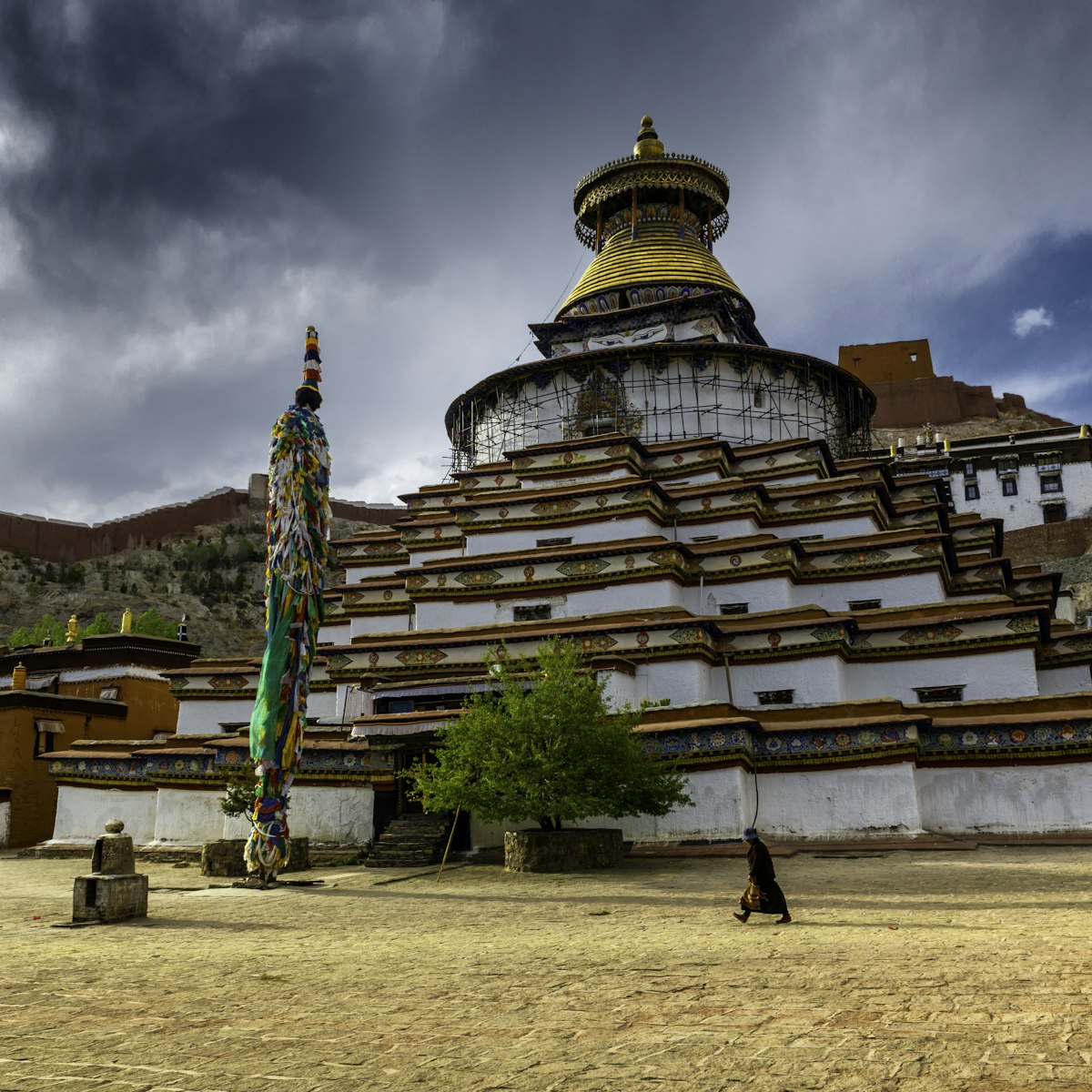The high red-walled compound in the far north of Gyantse houses Palcho Monastery, founded in 1418. The main assembly hall is of greatest interest, but there are several other chapels to see. There’s a small but visible population of 80 monks and a steady stream of prostrating, praying, donation-offering pilgrims doing the rounds almost any time of the day.
This was once a compound of 15 monasteries that brought together three different orders of Tibetan Buddhism – a rare instance of multi-denominational tolerance. Nine of the monasteries were Gelugpa, three were Sakyapa and three belonged to the obscure Büton suborder whose head monastery was Shalu near Shigatse.
The main assembly hall is straight ahead as you walk into the compound, and is where most people begin their explorations. The entrance is decorated with statues of the Four Guardian Kings, and just inside to the right is a large Wheel of Life mural.
The hall is kept quite dark, though most of the faded wall murals are original, dating to the 15th century. The chapels also contain a staggeringly beautiful selection of carved wooden statues, also dating to the monastery's founding.
To the left as you enter is the Dorjeling Lhakhang, a chapel containing a four-headed Nampa Namse (Vairocana) and the other four Dhyani (or Wisdom) Buddhas in dark, ornate wooden frames. The big thangka wrapped in the yak leather bag is displayed during the Saga Dawa festival on the 18th day of the fourth Tibetan month. Pilgrims put their heads in a hole underneath a set of ancient scriptures that is older than the monastery itself.
The impressive main chapel is located in the centre of the hall. The towering central image is of Sakyamuni (Sakya Thukpa), who is flanked by the Past and Future Buddhas. To the right of the main chapel is a lovely Jampa statue. There is an interior kora route around the chapel, which is lined with fine but dusty murals.
The chapel to the right features the Rigsum Gonpo trinity, along with the three religion-kings of Tibet. A small hall within contains a chörten built by Prince Rabten Kunzang Phok for his mother. Outside the door is a large tent used during cham (ritual dance) festivals.
There are a number of chapels on the upper floor that, at the time of writing, were only open to religious pilgrims. If you are able to access them, you will find a three-dimensional mandala, wall paintings of the Indian-looking mahasiddhas (highly accomplished Tantric practitioners) and lacquered images of key figures in the Sakyapa lineage. Each of the 84 mahasiddhas is unique and shown contorted in a yogic posture.
Photos cost ¥10 to ¥20 per chapel; pay a monk directly as you go through.

